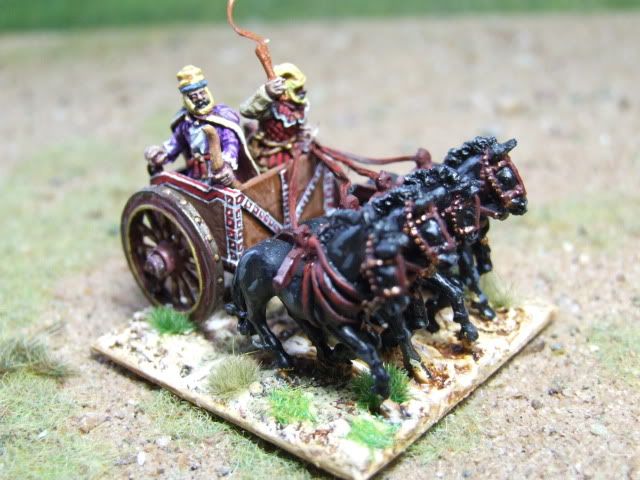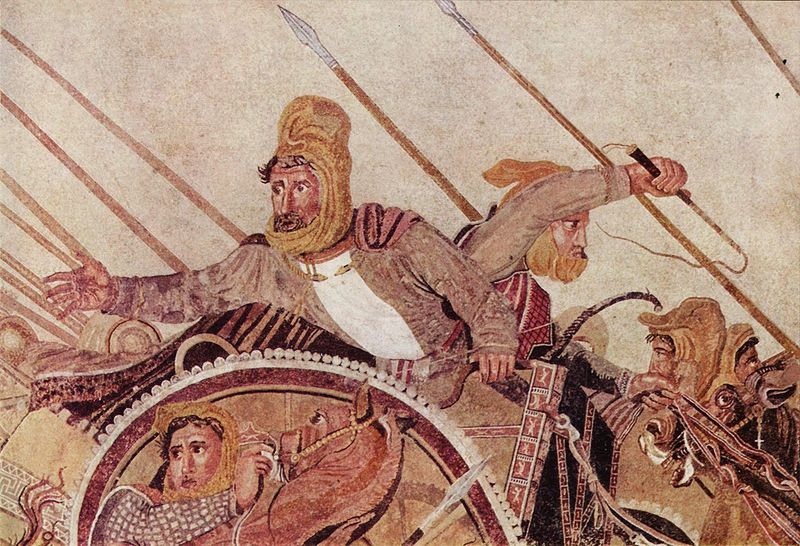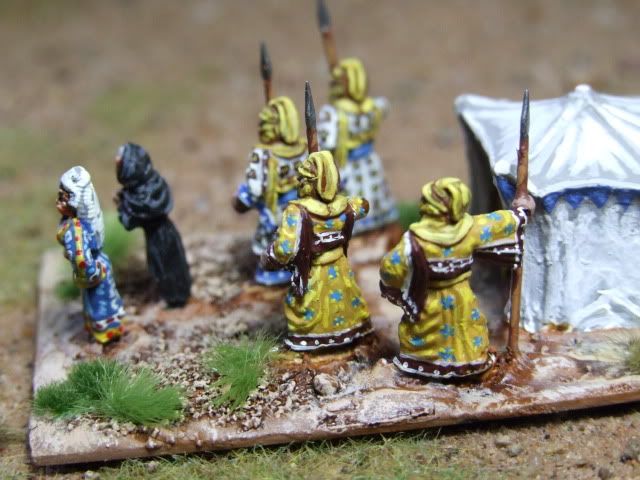The Persian Kings tend to be seen through the eyes of the Greek historians - generally as rather effete and luxury loving despots. Yet Xenophon praises many achievements and habits of the Persians which shows the rather ambivalent attitude which existed.
The 4th century saw the rule of four Persian Kings. Artaxerxes II and III ruled for most of the century. Artaxerxes II saw a challenge from his brother Cyrus at the start of his reign, details of which are covered in Xenophon's Anabasis. He had various further dealings with the Greeks with much playing off of one side against the other. The treaty which ended the Corinthian War was known as the King's Peace - Artaxerxes essentially threatened that he would aid those who wanted to accept the agreement against those who wouldn't.
There were various revolts by territories of the Empire against the central authority - the most successful being the Egyptians who maintained their independence through much of the century. One of Artaxerxes's attempts to regain control was led by Pharnabazus supported by the Greek Iphikrates, though the campaign failed due partly to disagreement by the two men.Artaxerxes III regained control of Egypt, taking two campaigns to do so. Diodorus says that he and most of his sons were murdered by the eunuch Bagoas. The sole survivor was elevated to the throne as Artaxerxes IV but he too was removed and replaced by the man who assumed the name Darius III.
Darius was probably a case of a man having greatness thrust upon him and he doesn't seem to have been up to the job. Perhaps if he'd had time he might have made a better showing but he was up against Alexander the Great.
It was traditional for Persian kings to be depicted in a chariot, such as this seal. Note the position of the axle. Some other depictions seem to indicate a further forward axle though there has been a lot of online discussion about this.
The studs on the wheels are very noticeable though the 'Alexander Mosaic' may overexaggerate them, producing what this blog terms the marshmallow wheels.
The studs doubtless help traction but also help to fix the tyre in place. Sections of tyre have been found, including the nails, and could be bronze shaped around the wheel in a U shape rather than a shrunk on iron tyre.
 I used the Xyston chariot. The wheels in the set are smooth - I tried to show the studs by using a blob of paint which was enough to show them but quick enough to do. I tried as much as possible to use the colour scheme from the mosaic.The purple tunic with broad white stripe may well have been a royal feature, as were the upright tiara with diadem tied around. The figure wears a cloak - I think it may have been likely that the king wwould have had a coat worn as a cloak, so I could have added some arms to it.
I used the Xyston chariot. The wheels in the set are smooth - I tried to show the studs by using a blob of paint which was enough to show them but quick enough to do. I tried as much as possible to use the colour scheme from the mosaic.The purple tunic with broad white stripe may well have been a royal feature, as were the upright tiara with diadem tied around. The figure wears a cloak - I think it may have been likely that the king wwould have had a coat worn as a cloak, so I could have added some arms to it.The reins were made from dental tape. This is a bit wider than floss but probably too wide - I ended up splitting each strand in two.
This is a bit of baggage I put together. The Greek historians could be rather snearing about the finery and family which could accompany a Persian king so I thought I'd give them something to sneer at.
I had a pack of Xyston 'Eastern levies' and some of the same company's women. The younger women has had sleeves and a veil added to make her a bit more Persian. The men have been painted using some of the designs shown on the clothes of the Immortals on brickwork of the previous century. Since these chaps are defending the tents I'm letting them keep ceremonial gear.
The tent is from Baueda. It is quite small compared to these rather large Xyston figures but it nice all the same. If I played something like FoG where the camp is a single large base I might be tempted to build a single grand pavillion. Part of the booty of Plataea in the fifth century was the King's pavillion which is siad to have been the model for the original Odeon in Athens. This article gives the theory that since the Odeon and the Hall of a Hundred Columns at Persepolis were of such similar size that the pavillion would have been modelled after the one and used as the model for the other. It would have been at least partly wood. Alexander's tent could well have been a similar design, though with fifty columns.
I still have a fair few unpainted 'Kardakes' who may yet find themselves forming a second arc of honour guard.





1 comment:
I will be watching this with interest. Nice work.
Post a Comment